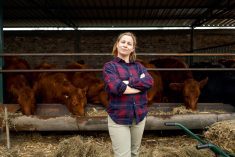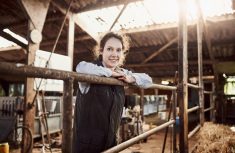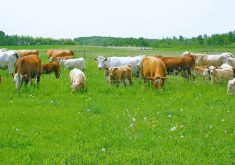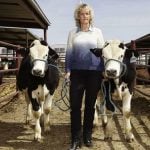Vance Crowe is a podcast host who aims to expose listeners to ideas they would not otherwise encounter, and ultimately make better decisions and gain wisdom. He also records legacy interviews, where individuals are recorded for the family to have as a lasting memory or keepsake. He recently spoke at the Agri-Visions conference in Lloydminster.
When Crowe talks about differences between how rural and urban people think, he suggests that the divide is internal and accelerating. He refers to a “vague timeline” of the development of agriculture with humans starting out as hunter-gatherers. The emergence of dairy happened next, giving warriors extra protein. This was followed by the domestication of hogs in China, adding protein and fat to the diet. Crowe says the development of wheat “was the cornerstone of civilization and enabled the first forms of money and trade” with a commodity that could be stored.
Read Also

Building demand together: The impact of Canada’s beef import levy
The beef import levy has become a central tool for ensuring balance in Canada’s beef industry
He explains agricultural land use with Johann Heinrich von Thünen’s model. This model was developed in 1826 by the German economist/farmer to equate land rent with what type of crops to grow. Von Thünen’s main assumption was that agricultural land use forms as concentric circles around the central market. The market consumes all the surplus production, which must be transported from the rural areas.
The first land use circles beyond the city’s central market include market gardening and dairy. Farther out is forestry and energy, then grain and field crops. The outermost circle includes ranching and livestock.
The centre of the circle (the city) has the highest density of people and they want different things than those in the outlying circles. The growth rate in the cities continues to accelerate. Crowe also cites the 15 per cent rule. “Every time you double the population of a city, you increase wealth by 15 per cent,” suggesting there are many benefits enjoyed by those in the city. However, the inverse is true, as it also brings a 15 per cent increase in challenges such as poverty, crime and homelessness.
“The perception that people in the city have is literally different than yours,” he says. For example, urban and rural people experience day and night and hot and cold differently, as most urban people are indoors more than out. “They are entirely different experiences, and neither is wrong or right.” It is important to remember this when trying to understand and connect with other people.
Crowe adds that as humans, we like to be in a tribe. That makes it important to get along with others. “We are not a species that wants to disagree.”
That also means our beliefs may not always come from our own experiences but from a part of the tribe or group we feel closely connected to. “Responses will not always be logical or rational, but emotional.”
Crowe also references the gap between mob justice and collective justice, cautioning people to be mindful of the differences.
Many will have heard the idea that you’re the average of the five people you spend the most time with. “Who from this do you disagree with the most? That is the widest angle you will get new ideas from, and I encourage you to hear things you do not agree with.”
Be strategic about who you are influenced by, especially key people who you may not have realized were major influencers. You can’t know what the right answer is, and you need to be around people who you respect and who have different opinions, he adds. “Be a part of a community that makes you more expansive.”
There is a connection with how we communicate within that community. Again, as I have written about before, the role of an active listener is extremely important. Crowe suggests there are two things we do which get in the way of effective listening. One is the internal dialogue going on where you are thinking too much, “Oh shoot, what was the guy’s last name? Did I pay the bill for the forage insurance? When is my next shift at the hockey rink?” And on and on and on.
Another block to effective listening is fast matching. For example, when the person says, “I am struggling with x,” and your response is, “Oh yeah, me too, the same thing happened to me.” You then may go on to dominate or take over the conversation.
A couple more gems were: “You don’t know what you think until you say it out loud. Always ask the question — what the lesson in that was.” There were many lessons in his talk.















